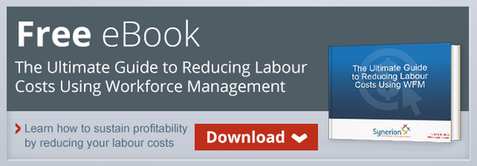 Retail workforce management is a difficult topic for experienced and new managers alike. The sheer variety of personalities, schedules and positional needs can keep a manager occupied for hours after the store closes. These five retail workforce management tips offer a few strategies to use time more effectively while still keeping customer satisfaction and experience scores high.
Retail workforce management is a difficult topic for experienced and new managers alike. The sheer variety of personalities, schedules and positional needs can keep a manager occupied for hours after the store closes. These five retail workforce management tips offer a few strategies to use time more effectively while still keeping customer satisfaction and experience scores high.
Use Scheduling Software
The variability in workflow and employee availability make scheduling unpredictable, regardless of managerial experience. Factor in the need for more staff during holiday seasons and scheduling becomes one part experience, one part psychic ability.
Automated scheduling systems are a retail workforce management necessity that keeps employees happily productive and mangers worry-free. An automated workforce management system can assess historical workflow and schedule according to those trends, rather than memory. The ability to input employee schedules ensures that managers don't accidentally schedule employees during unavailable times. To reduce the time spent timekeeping, managers need a workforce management system.
Empower Employees
It doesn't matter whether you're working in healthcare, finance or retail, every employee wants to feel like they are making a difference when they go to work. Within retail, it's important to empower employees to make those changes while being overseen by their manager. Not only should managers encourage feedback and suggestions for increasing customer satisfaction, managers should empower employees to make those changes.
With the next great idea you receive, sit down with the employee who made the suggestion to discuss how to implement it and see it in action. Then, let that employee lead the charge. Empowering employees is a simple and effective way to increase employee satisfaction and improve customer retention and satisfaction.
Cross Train Employees
Many hands lighten heavy loads and in no industry is that more true than retail. One of the keys to retail workforce management is ensuring that experienced employees are constantly learning and becoming more useful. Cross training is a great way to keep employees engaged and make absences less stress-inducing. While managers should never overwhelm new employees with significant cross training, it can be a breath of fresh air for experienced employees to increase productivity, for the employee and the store. Next time you're fully staffed, let an experienced employee learn how to function in a new department.
Cater to the Career
With nearly a third of retail employees under the age of 24, working retail can feel more like managing a temp agency rather than a lifelong career. Still, it's important to treat your positions like a career rather than a temporary job. Hold annual reviews, assign projects and encourage education and promotion. Not only does this approach increase respect for the position, but it also attracts higher caliber employees. Assume every employee is accepting that position for life and treat the position as the critical part of the company that it is.
Stay Elastic
In retail, change is inevitable. Between constant changes in customer needs and necessity to compete with other retailers, businesses that don't change close. Ensuring that you and your employees stay elastic and eager for change helps your company stay in business. Empowering employees is one way to stay elastic, but encouraging group problem solving and innovation are two others. Consistently provide education and discussion about future changes to keep employees aware of change and ready to embrace that change.
A great retail manager doesn't just produce high sales. They need to manage employees, navigate timekeeping, keep abreast of new trends in retail and so much more. These retail workforce management tips offer just a few ways to help employees productively and happily.
